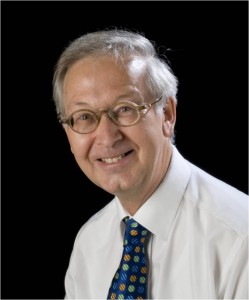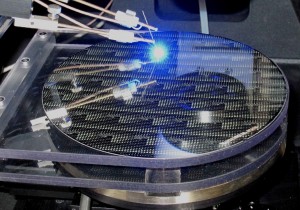|
||||||||||||||||||||||||||||||||
|
||||||||||||||||||||||||||||||||

Sir Colin Humphreys, PhD from Cambridge and a BSc from Imperial College, is Professor of Materials Science and Director of Research in the Department of Materials Science and Metallurgy at the University of Cambridge (United Kingdom). His research covers three main areas: gallium nitride (GaN) materials and devices, advanced electron microscopy, and ultra-high temperature aerospace materials. He has published hundreds of papers on electron microscopy and given many plenary and invited lectures throughout the world. He has received national and international medals for his research in electron diffraction and microscopy and on gallium nitride.
He founded a spin-off company (CamGaN) to exploit the research on gallium nitride of his group on low-cost LEDs for home and office lighting. The company was acquired in February 2012 by Plessey, which manufactures LEDs based on this technology. He is the founder and director of the Cambridge Centre for Gallium Nitride, a center with world-class growth and characterization facilities where research is carried out from fundamental studies on GaN to applications in LEDs and lasers. He also founded and directs the Cambridge/Rolls-Royce Centre for Advanced Materials for Aerospace, which developed materials that now fly in Rolls-Royce engines.
He is a fellow of the Royal Society, the self-governing Fellowship of many of the world’s most distinguished scientists drawn from all areas of science, engineering, and medicine, and of the Royal Academy of Engineering. He is also a fellow of Selwyn College, one of the Cambridge University 31 autonomous units in which students live, eat, socialise and receive some teaching sessions. In 2010 he was Knighted (receive a special honor and the title of Sir from the Queen of England) for services to science.
Professor Humphreys has authored over 600 peer reviewed papers with over 9,400 citations and his h-index is 43.
In his limited spare time he writes books on science and religion, such as “The Mystery of the Last Supper: Reconstructing the Final Days of Jesus”, which has recently been translated into Russian, German, Portuguese, Japanese and Greek.
Read our interview with the plenary speaker.
SBPMat newsletter: – Why do you think gallium nitride is one of the most important semiconductor materials? Which are the main challenges in the field of gallium nitride for materials scientists and engineers?
Sir Colin Humphreys: – I think gallium nitride is one of the most important semiconductor materials because of the huge range of potential applications and the benefits to mankind which will result from these applications. The main challenges to realising these applications are reducing the cost of GaN devices and improving the efficiency still further.
SBPMat newsletter: – Which are the principal contributions you have done for the development of Materials Science and Engineering?
Sir Colin Humphreys: – The principal contributions I have made for the development of Materials Science and Engineering are solving some fascinating problems in basic science and also developing materials for industry. For example, I direct a Rolls-Royce Centre in Cambridge on Advanced Materials, and some of the materials we have developed are now flying in Rolls-Royce engines. In addition, I direct the Cambridge Centre for Gallium Nitride, and the low-cost GaN LEDs on silicon that we developed are now being manufactured in the UK by Plessey.
SBPMat newsletter: – Brazil is making efforts to transfer technology to the industry. You have founded a spin-off company and research centers, in both cases having good technology transfer results. Based on these experiences, what would you say to the Brazilian Materials community about making technology transfer real?
Sir Colin Humphreys: – First, scientists and engineers have to have an idea for a new or better product. In order to convince industry, it is important that the scientists and engineers make prototype devices to show to industry. If the scientists and engineers decide to set up their own company, it is usually helpful to bring in a CEO from outside to run the company because most scientists and engineers are not so good at running a company. The choice of the CEO is critical. It is also possible to set up a company for virtually nothing, set up a website for virtually nothing, etc. It is really important to get lots of good advice. I was fortunate in setting up two companies, in that I got a lot of good advice for free because there are a lot of people around Cambridge in the UK that have set up companies and can give good advice. Finally, making technology transfer real is good fun, but also hard work! You may have lots of set-backs, but keep persevering! Also, be enthusiastic about your product, if you are not enthusiastic, no-one else will be! You have really to believe in what you are doing.

SBPMat newsletter: – If possible, tell us a little about the topic of your plenary talk at SBPMat meeting.
Sir Colin Humphreys: – In my plenary talk at João Pessoa I plan to start by showing some striking atomic-resolution electron micrographs showing single silicon impurity atoms in graphene, and showing that they can occupy two different sites. I will also show images of dancing silicon atoms in graphene (I know Brazilians are experts in dancing!). I will then move on to talk about Gallium Nitride (GaN) and how this amazing man-made material is likely to save more energy and CO2 emissions than solar, wind-power and biomass together! I will describe how advanced electron microscopy and atom probe tomography have been used to solve the fascinating problem of why GaN LEDs are so bright when the dislocation density is so high. I will also describe how growing GaN LEDs on large area silicon substrates can substantially reduce the cost of LEDs, and this cost reduction is likely to enable GaN LEDs to be the dominant form of lighting in our homes, offices, streets, etc, in the near future. In addition, I will show how GaN-based power electronic devices are 40% more efficient than silicon power electronic devices, so replacing Si power electronics by GaN would save another 10% of electricity, on top of the 10-15% electricity savings from using GaN LEDs. So GaN could potentially save 25% of the world’s electricity consumption, which is amazing.
In addition to saving energy and carbon emissions, if aluminium is added to GaN, then deep-ultra-violet (UV) light is emitted and this can kill all bacteria and viruses. So such deep-UV LEDs could be used for water purification in the world, saving millions of lives. Finally I will talk about how optimised quality LED lighting can improve the health of all of us and the exam results of school children! My talk will range from basic science through to applications.